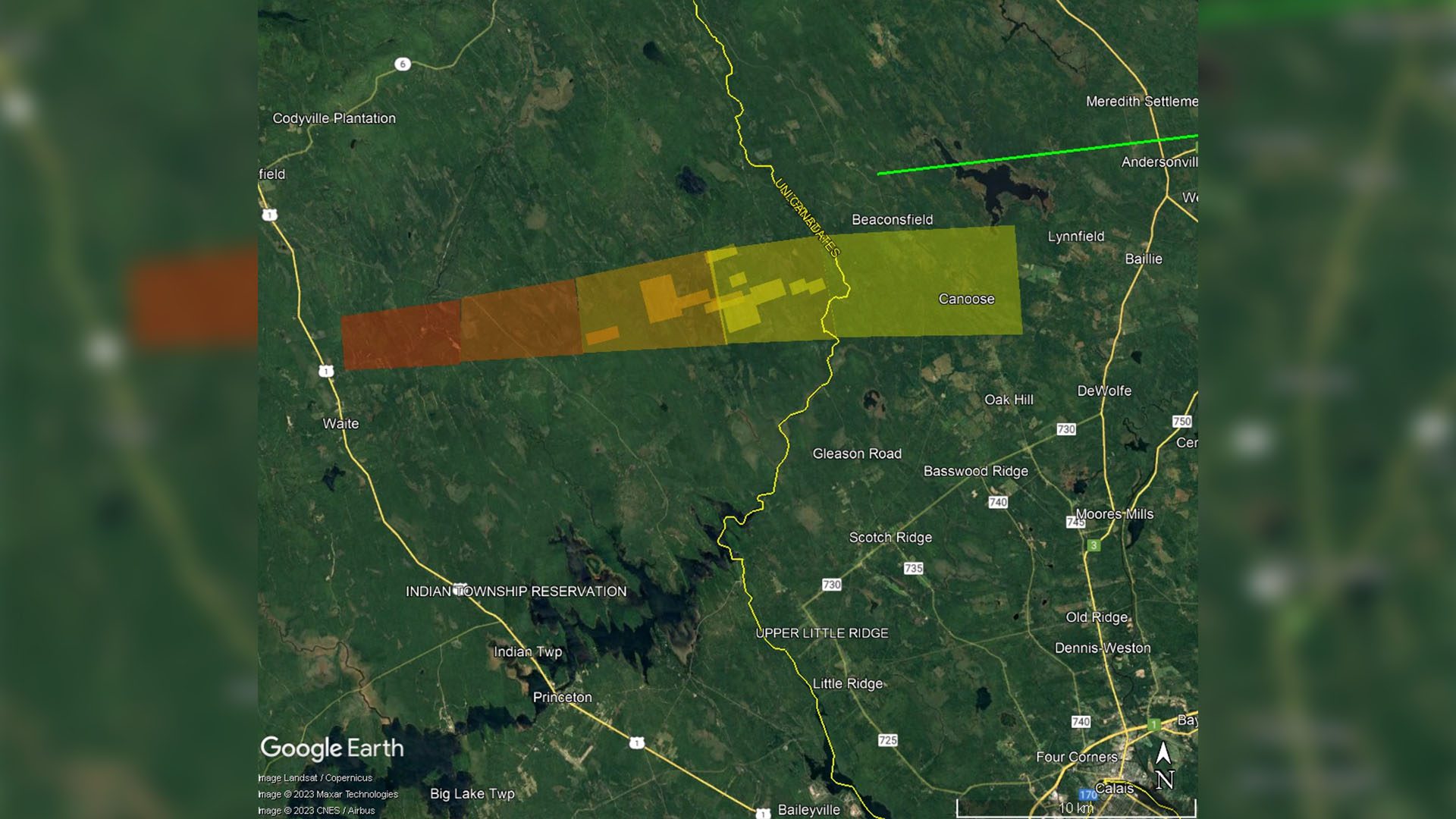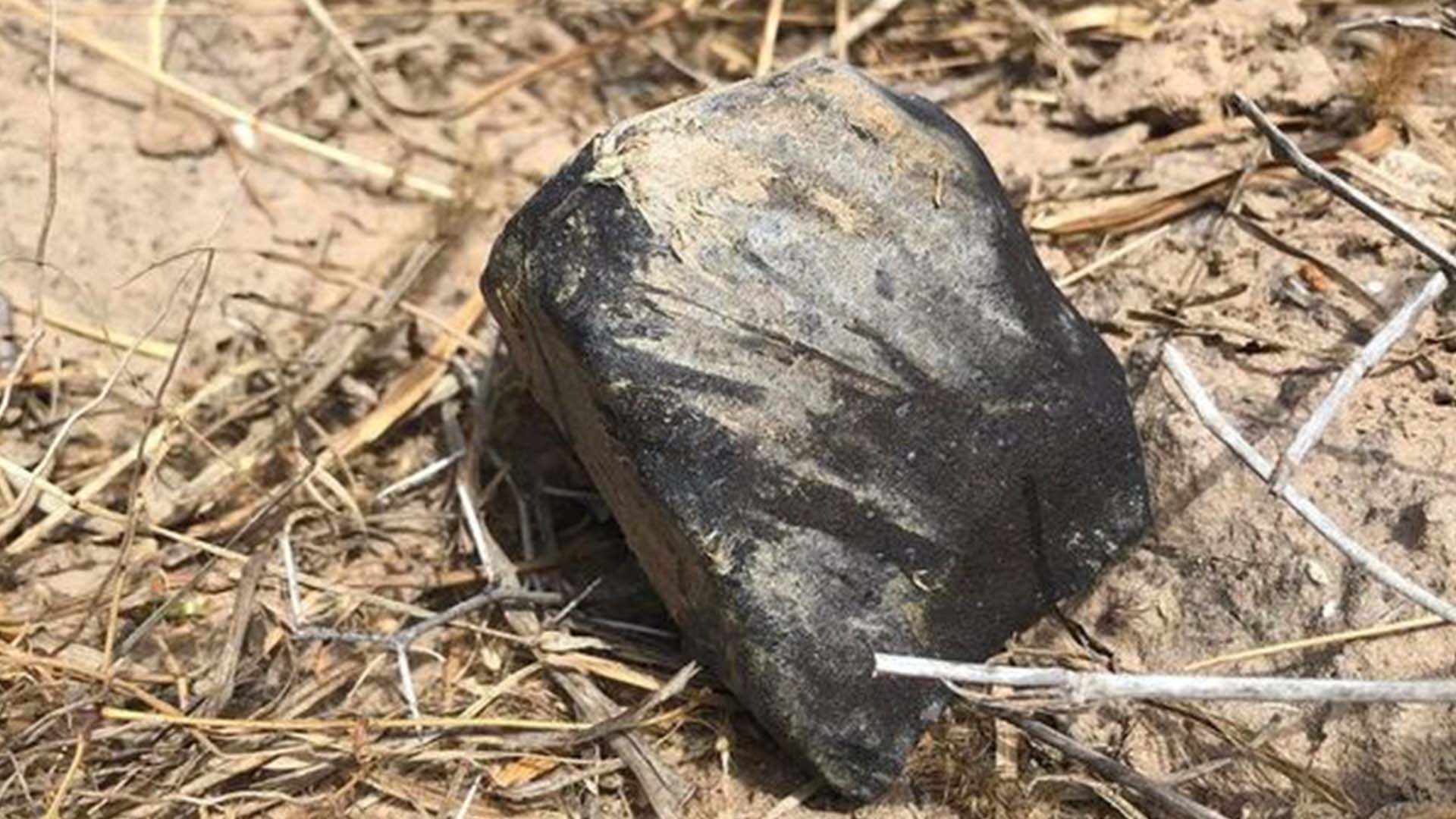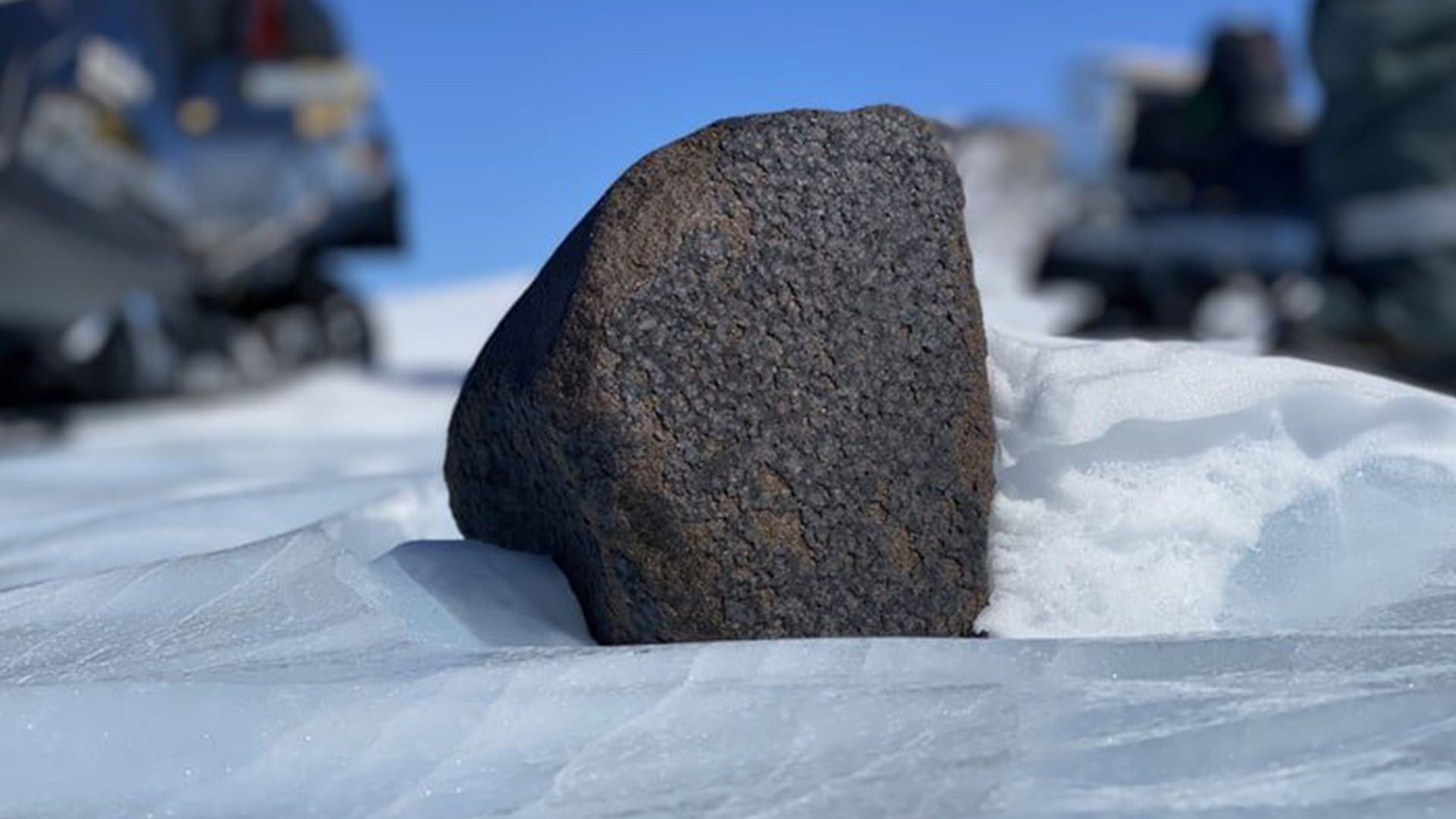On April 8, a meteorite crashed into the remote forest near Maine’s Canadian border. Now, the Maine Mineral and Gem Museum is offering $25,000 to the first person who can find and deliver the first 2.2-pound specimen of the space rock.
The Maine Meteorite
An unusually bright fireball was visible for more than four minutes in broad daylight around noon on April 8, and numerous people reported sonic booms in the area. NASA’s Astromaterials Research & Exploration Science Lab confirmed that four radar sweeps detected “signatures consistent with falling meteorites seen at the time and location reported by eyewitnesses.” The lab also calculated the “strewn field”, which is where the meteor might be found.

The Maine Mineral & Gem Museum will award $25,000 for a large specimen of the meteorite, but will also accept (and pay for) any fragments that can be found. In a Facebook post, the museum reminded its followers to obtain owner permission before meteorite hunting in the forest area where the meteorite is thought to be located.
Even though only about nine meteorites are recovered each year, Darryl Pitt, the chair of the Maine Mineral and Gem Museum, remains optimistic. As he said in a statement, “With more people having an awareness, the more people will look — and the greater the likelihood of a recovery.”
How to Identify a Meteorite
While testing for chemical composition is the most definitive way to test if a specimen is a meteorite, there are a few other signs that could point to a rock’s space origin. According to the University of Alberta, there are four preliminary tests that anyone can conduct to tell the difference between space rocks and rocks from Earth.
First, check if the specimen feels unusually heavy for its size. Many meteorites are very dense and feel heavier than most rocks. Next, test the specimen’s magnetism with a standard fridge magnet. Practically all meteorites contain iron-nickel metal and can attract magnets easily. Next, check for holes or bubbles—a meteorite will not have either. Finally, examine the outer layer for a thin, black, eggshell-like crust. When a meteor falls through Earth’s atmosphere, its outer surface melts and forms a fusion crust.







